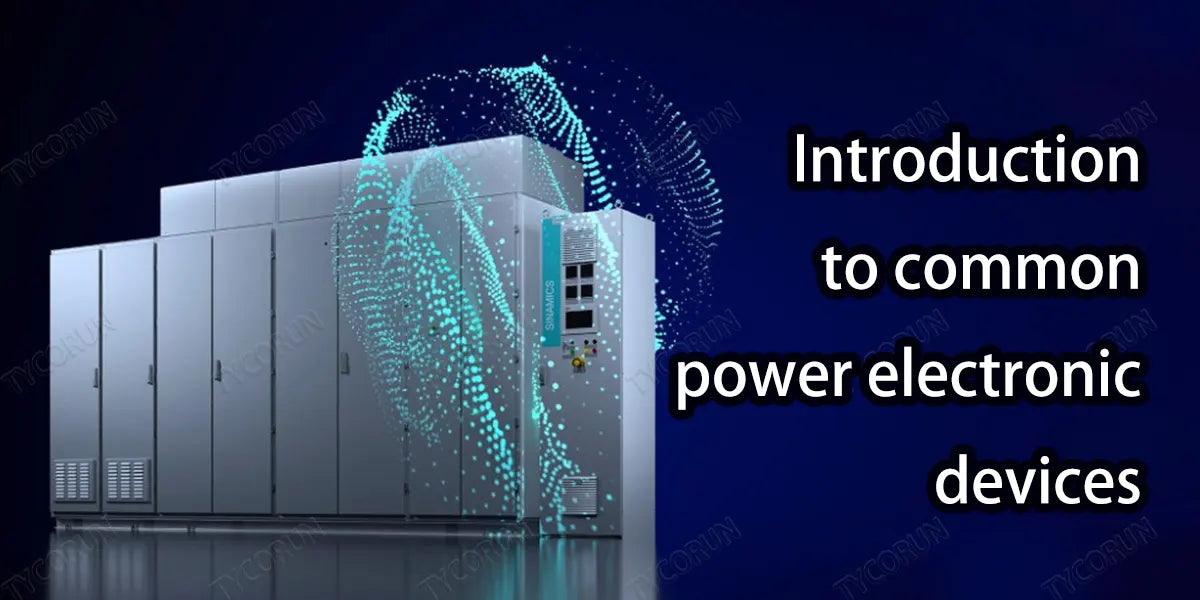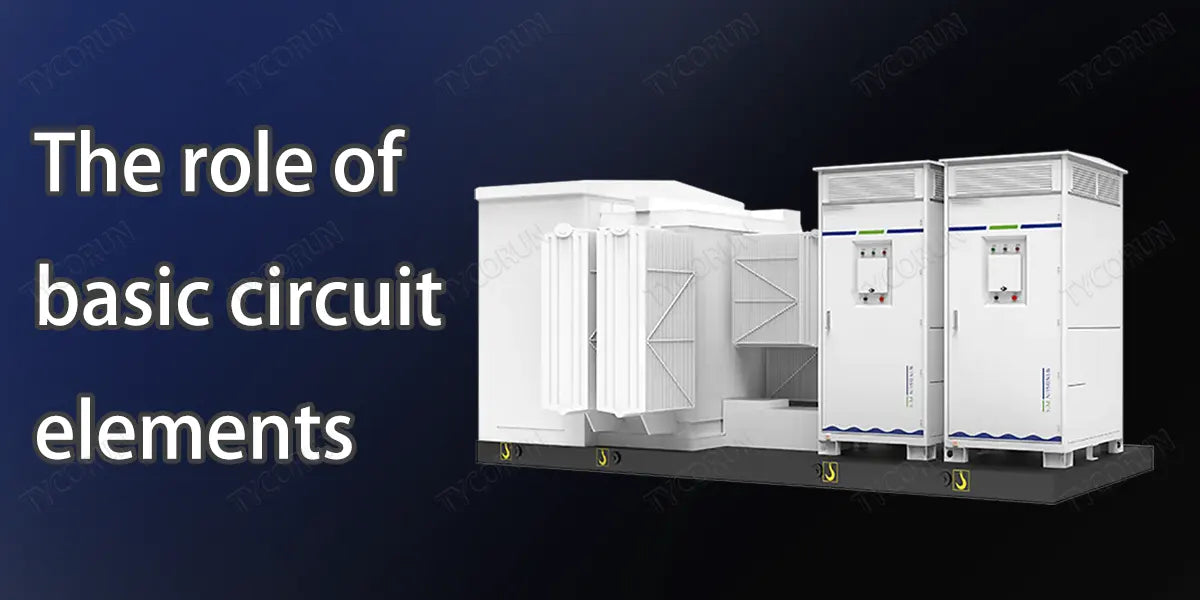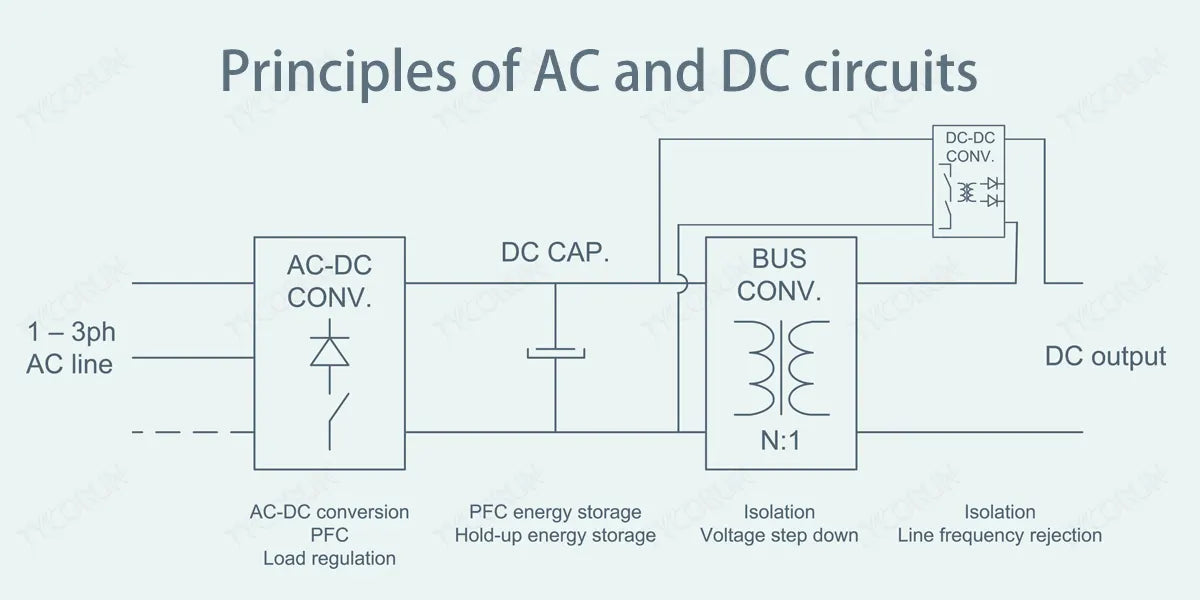
Main content:
The basic knowledge of power electronics is the foundation for understanding energy storage, and mastering this knowledge is of great significance for understanding the principles and applications of PCS.
Power electronics is a technology that studies the use of power electronics to convert electrical energy into other forms of energy, and it plays a pivotal role in the modern power system. In this article, we will focus on the basics of power electronics, including power electronics, basic circuit components, and AC and DC circuit principles.
1. Introduction to common power electronic devices
They enable the conversion and control of electrical energy in the electrical system. Here are a few common types of power electronics:
- Diode
A diode is one of the most basic power electronic devices, and it has an unidirectional conduction characteristic. When a forward voltage is applied to the diode, current can flow through. And when the reverse voltage is applied to the diode, the current barely flows. Diodes are widely used in rectifiers, inverters (MOSFET diode) and other circuits.
- Transistor
A transistor is a bipolar device that has amplification and switching functions. The turn-on and turn-off of a transistor depends on its base current, so the turn-on state of the transistor can be controlled by controlling the base current. Transistors are commonly used in power electronics systems in circuits such as inverters and choppers.
- Thyristor
A thyristor is a four-layer, three-terminal semiconductor device with voltage controlled switching characteristics. It has three terminals: anode, cathode, and control pole.

When the control electrode voltage is greater than a certain value, the thyristor is turned on. When the control pole voltage is less than a certain value, the thyristor is turned off. Thyristors are widely used in AC circuits for rectification, inverter, etc.
- Insulated gate bipolar transistors (IGBTs)
IGBTs are composite power electronics that combine the advantages of field effect transistors (FETs) and bipolar transistors. It has the characteristics of high efficiency, high reliability, and low resistance. IGBTs are widely used in power electronic systems such as choppers, inverters (inverter IGBT), etc.
2. The role of basic circuit elements
In power electronic circuits, common circuit components include inductors, capacitors, resistors, etc. The following are their roles and applications in power electronics systems:
- Inductor
An inductor is a component that stores energy, and it is mainly used in circuits such as filtering, compensation, and conversion. The application of inductors in power electronic systems includes input filtering, output filtering, current control in inverters, etc.

- Capacitor
A capacitor is a component that stores electrical charge, and it is mainly used in circuits such as filtering, coupling, and energy transfer. The application of capacitors in power electronic systems includes input filtering, output filtering, voltage regulation, etc.
- Resistance
Resistance is a component that consumes electrical energy, and it is mainly used in circuits such as current limiting, voltage division, and heat generation. The application of resistors in power electronic systems includes load resistors, current-limiting resistors, heat dissipation circuits, etc.
3. Principles of AC and DC circuits
DC circuits: DC circuits are circuits in which the direction of voltage and current does not change with time. In DC circuits, there is a steady transfer of energy between the power supply, load, and wires. The basic components of a DC circuit include a power supply, resistors, capacitors, and diodes.

AC circuits: AC circuits refer to circuits in which the direction of voltage and current changes periodically with time. In AC circuits, there is a periodic transfer of energy between the power supply, load, and wires. The basic components of an AC circuit include a power supply, inductor, capacitor, and transistor.
4. The core technology of power conversion system
- Inverter technology
The core function of an energy storage converter is to convert direct current energy into alternating current or vice versa into direct current. This requires the use of power electronics such as 1000w inverter or 3000w inverter and bidirectional DC/DC converters to achieve efficient, stable and precise control of electrical energy.
- Control technology
The control technology includes the detection and control of current, voltage, frequency and other parameters to ensure the stable operation of the converter under various working conditions.
Commonly used control strategies include PID control, fuzzy control, neural network control, etc. Through these control strategies, the output voltage and current of the converter can be adjusted and optimized in real time.
- Energy management technology
The storage and release of electrical energy needs to be managed efficiently to improve the efficiency and reliability of system operation. Energy management technologies include charge and discharge control, predictive maintenance, and condition monitoring of energy storage systems.
Through these technologies, the refined management of the energy storage system can be realized, and its service life and safety can be improved.

- Power electronics and heat dissipation technology
The power electronics used, such as IGBTs and SiC MOSFETs, need to withstand high voltages, high currents, and high temperatures. Therefore, the selection and heat dissipation design of power electronic devices is one of the key technologies of energy storage converters.
Suitable power electronics and good heat dissipation design can ensure the stable operation and long life of the energy storage converter.
- System integration technology
It is often necessary to integrate with other devices such as lithium battery, inverters, chargers, etc., to form a complete energy storage system. System integration technology includes the design of electrical connections, communication interfaces, control strategies, etc.
Through these technologies, the energy storage converter can work in tandem with other devices to improve the performance and reliability of the entire system.
5. Conclusion
Energy storage converter is a kind of power electronic equipment used to realize the storage and release of electric energy, which is widely used in renewable energy power generation, power system stabilization, microgrids and electric vehicles.
Mastering these key technologies can realize the efficient, stable and reliable operation of energy storage converters, and provide high-quality power conversion services for various application scenarios.
Related articles: AC coupling vs DC coupling, best solar inverter, coupling capacitor
















